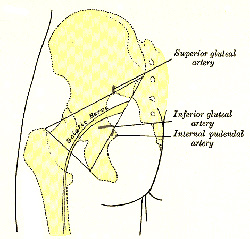Lower Back Pain Symptoms: Help Your Doctor Diagnose and Treat
It is important to consider the character of lower back pain symptoms because knowing how intense the pain is and where it will give your doctor vitals clues on your health and the causes of the back pain.

Lower back pain symptoms primarily arise in the lumbosacral region (or the lower part of the back). The pain may confine to the lower back, or it may radiate to the back, front or side of one leg. In cases of pinched nerves like sciatica, numbness felt in the leg that is being innervated by the affected nerve. Commonly, lower back pain is one-sided. Depending upon the affected nerve, you may have lower left back pain or lower right back pain symptoms- telling your doctor if the pain is on the left side or the right side can help diagnose the injury.
Certain conditions may aggravate your lower back pain symptoms. Strenuous and high-impact activities and heavy lifting may make the pain worse. Lower back pain may also worsen when lying down or when sitting (like while taking a long trip in a car) or standing for a prolonged period.
Lower back pain may be acute, sub-acute or chronic. Pain with a duration of fewer than four weeks is called acute. The pain of more than 12 weeks duration is chronic. Between 4 to 12 weeks duration, the lower back pain characterized as sub-acute.
Doctors also ask patients to describe their lower back pain with the use of a Pain Scale from 0 to 10, with 0 as no pain to 10 for severe pain.
The character of lower back pain could give clues to the doctor on what is causing it, and open up treatment options. For example, numbness and weakness in one leg are indicative of a compressed nerve. Compression of the 5th lumbar nerve (L5) is suspected if the patient could not move his big toe upward. Fifth sacral nerve compression is entertained if the patient could not stand on his toes or bring his foot downward (known as plantar flexion).
Lower Back Pain Symptoms: When to Seek Immediate Medical Care
While it is highly recommended that acute lower back pain sufferers seek medical attention right away, there are warning signs — “Red Flags” — which when accompanied by lower back pain warrant immediate emergency care.
These Red Flags of Lower Back Pain are enumerated below.
- Recent significant trauma (fall from a height, motor vehicle accident, or similar incident)
- Recent mild trauma in patients 50 years old and above (such as slipping and landing on the buttocks and falling down a few steps)
- Chronic steroid use (especially patients with asthma, COPD, and rheumatologic disorders)
- Osteoporosis
- Individuals older than 70 years old: There is an increased indication that lower back pain in this age group caused by infections, cancer, and abdominal disorders
- Unexplained fever of over 100 degrees Fahrenheit
- History of recent infection
- History of previous or current cancer
- Intravenous drug use
- Unexplained weight loss
- Lower back pain symptoms worsen at rest: Pain may be of infectious (such as with a kidney infection) or malignant origin. Lower back pain kidney symptoms are severe and should investigate right away.
- Presence of a focal neurologic deficit: Inability to walk, raise or lower the foot at the ankle, failure to move the big toe upward, and the inability to walk on heels or stand on toes
- Loss of bowel or bladder control, including incontinence (difficulty in starting or stopping passage of urine), are symptoms of cauda equina syndrome and is considered a serious medical emergency
All of these Red Flags of lower back pain symptoms warrant that the patient goes to the hospital for immediate determination of the lower back pain causes and appropriate back pain relief treatment.

